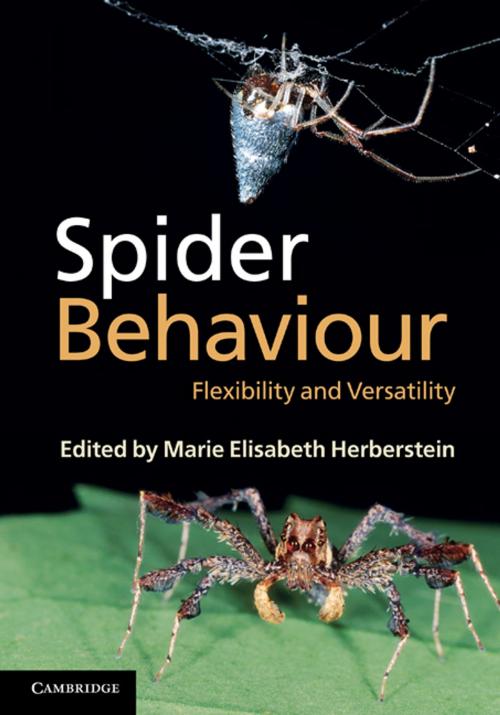Spider Behaviour
Flexibility and Versatility
Nonfiction, Health & Well Being, Medical, Veterinary Medicine, Science & Nature, Science, Biological Sciences, Zoology| Author: | ISBN: | 9780511853197 | |
| Publisher: | Cambridge University Press | Publication: | January 27, 2011 |
| Imprint: | Cambridge University Press | Language: | English |
| Author: | |
| ISBN: | 9780511853197 |
| Publisher: | Cambridge University Press |
| Publication: | January 27, 2011 |
| Imprint: | Cambridge University Press |
| Language: | English |
Spiders are often underestimated as suitable behavioural models because of the general belief that due to their small brains their behaviour is innate and mostly invariable. Challenging this assumption, this fascinating book shows that rather than having a limited behavioural repertoire, spiders show surprising cognitive abilities, changing their behaviour to suit their situational needs. The team of authors unravels the considerable intra-specific as well as intra-individual variability and plasticity in different behaviours ranging from foraging and web building to communication and courtship. An introductory chapter on spider biology, systematics and evolution provides the reader with the necessary background information to understand the discussed behaviours and helps to place them into an evolutionary context. Highlighting an under-explored area of behaviour, this book will provide new ideas for behavioural researchers and students unfamiliar with spiders as well as a valuable resource for those already working in this intriguing field.
Spiders are often underestimated as suitable behavioural models because of the general belief that due to their small brains their behaviour is innate and mostly invariable. Challenging this assumption, this fascinating book shows that rather than having a limited behavioural repertoire, spiders show surprising cognitive abilities, changing their behaviour to suit their situational needs. The team of authors unravels the considerable intra-specific as well as intra-individual variability and plasticity in different behaviours ranging from foraging and web building to communication and courtship. An introductory chapter on spider biology, systematics and evolution provides the reader with the necessary background information to understand the discussed behaviours and helps to place them into an evolutionary context. Highlighting an under-explored area of behaviour, this book will provide new ideas for behavioural researchers and students unfamiliar with spiders as well as a valuable resource for those already working in this intriguing field.















